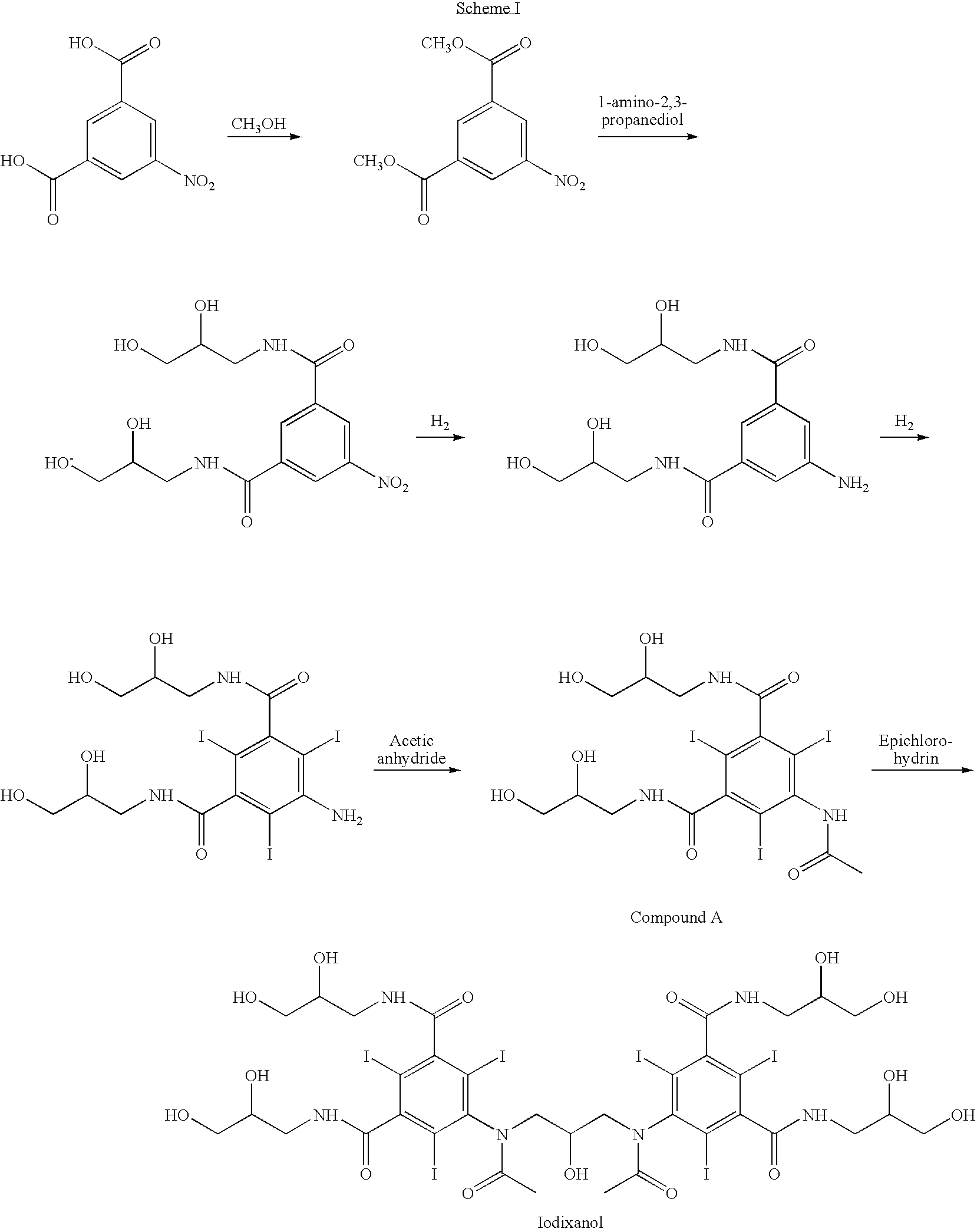Crystallization of iodixanol in isopropanol and methanol
a technology of isopropanol and methanol, which is applied in the direction of carboxylic acid amide separation/purification, organic chemistry, etc., can solve the problems of high cost and time consumption of purification of end product iodixanol, and the use of preparative liquid chromatography is a serious disadvantag
- Summary
- Abstract
- Description
- Claims
- Application Information
AI Technical Summary
Problems solved by technology
Method used
Image
Examples
example 1
[0036]Crude iodixanol (about 700 kg, HPLC purity 83-84%) dissolved in water is concentrated on a falling film evaporator followed by conventional distillation to a viscous solution that contains about 0.17-0.18 L water / kg crude iodixanol. Methanol (1400 L) is added under reflux, and the solution is seeded with crystalline iodixanol (about 2-3 kg). Isopropanol (540 liter) is added at a rate of 50-100 L / hour under reflux. After 30 hours more isopropanol (about 700 L) is added at the same low rate. A third isopropanol addition may be made. At least 65 hours after seeding and when the mother liquor concentration is 7.0 w / v % or lower, the suspension is filtered on a pressure filter at 60° C. and up to 1 bar overpressure of nitrogen. The resulting filter cake is washed with methanol at about 60° C. (totally 750 L). The HPLC purity of the crystals is 98.0-98.5%, and the crystallisation yield 85-90% from crude iodixanol.
PUM
| Property | Measurement | Unit |
|---|---|---|
| Volume | aaaaa | aaaaa |
| Volume | aaaaa | aaaaa |
| Crystallization enthalpy | aaaaa | aaaaa |
Abstract
Description
Claims
Application Information
 Login to View More
Login to View More - R&D
- Intellectual Property
- Life Sciences
- Materials
- Tech Scout
- Unparalleled Data Quality
- Higher Quality Content
- 60% Fewer Hallucinations
Browse by: Latest US Patents, China's latest patents, Technical Efficacy Thesaurus, Application Domain, Technology Topic, Popular Technical Reports.
© 2025 PatSnap. All rights reserved.Legal|Privacy policy|Modern Slavery Act Transparency Statement|Sitemap|About US| Contact US: help@patsnap.com

